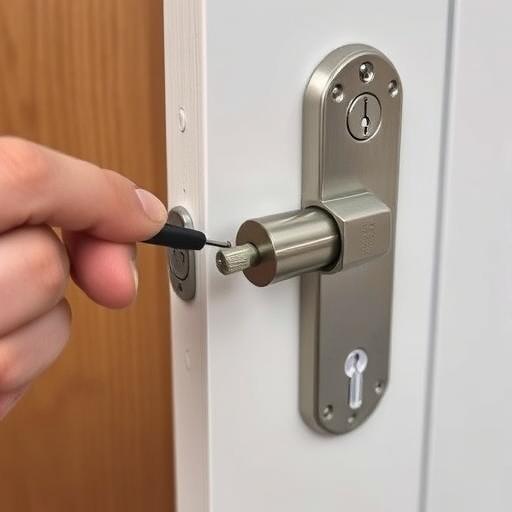How to Pick a Door Lock
Knowing how to pick a door lock can be a valuable skill in various situations, such as emergencies, misplaced keys, or even as part of locksmith training. However, it’s crucial to approach this skill with responsibility and ethical consideration. This guide will walk you through the essentials of lock picking, from understanding the mechanics of locks to mastering the techniques, all while emphasizing the importance of legality and ethics. Whether you’re a curious beginner or looking to refine your skills, this article has you covered.
Step-by-Step Process
Gather Tools
Use lock picks, tension wrench, and torque wrench.
Insert Tension Wrench
Apply slight rotational pressure to the plug.
Insert Lock Pick
Lift pins individually until they set.
Test Rotation
Gently turn the plug to check for binding pins.
Unlock the Door
Fully rotate the plug once all pins are set.
Process infographic for How to Pick a Door Lock
Understanding Door Locks
Types of Door Locks
Door locks come in various designs, each with its own level of complexity. Pin tumbler locks are the most common, consisting of a series of pins that must align at the shear line to unlock. Wafer locks, often found in cars and cabinets, use flat wafers instead of pins and are generally easier to pick. Lever locks, typically used in safes and high-security doors, require lifting levers to a specific height. Understanding these types will help you choose the right tools and techniques for the job.
Components of a Lock
Every lock has key components that work together to secure or release the mechanism. The plug is the part that rotates when the correct key is inserted. Inside the plug, pins or wafers are pushed into place by springs. The shear line is the gap between the plug and the housing where the pins must align to allow rotation. Knowing these parts and how they interact is essential for successful lock picking.
Essential Tools for Lock Picking
Lock Picks
Lock picks are the primary tools used to manipulate the internal components of a lock. A hook pick is ideal for single-pin picking, while a rake pick is designed for quickly moving multiple pins. Tension wrenches apply rotational pressure to the plug, allowing the pins to set at the shear line. These tools are crucial for effective lock picking.
Lock Pick Sets
For beginners, a basic lock pick set is a great starting point. Look for sets that include a variety of picks and tension wrenches to handle different lock types. Quality and durability are important factors, as poorly made tools can break or damage the lock. Many beginner-friendly sets are available online or at specialty stores.
Alternative Tools
In emergencies, household items like paperclips or bobby pins can serve as makeshift lock picks. While these tools are less precise, they can be effective for simple locks. Bend the items to mimic the shape of a pick and apply gentle pressure to manipulate the pins. However, these alternatives should only be used as a last resort.
Step-by-Step Guide to Picking a Door Lock
Step 1: Insert the Tension Wrench
Start by inserting the tension wrench into the bottom of the keyway. Apply gentle rotational pressure in the direction the key would turn. This creates tension on the plug, allowing the pins to bind and set at the shear line.
Step 2: Use the Pick to Manipulate Pins
Insert the pick into the keyway and begin manipulating the pins. For single-pin picking, lift each pin individually until it clicks into place. For raking, move the pick rapidly across the pins to set multiple pins at once. Experiment with both techniques to see which works best for the lock.
Step 3: Feel for the Shear Line
As you manipulate the pins, pay attention to subtle clicks or movements. These indicate that a pin has reached the shear line. Once all pins are set, you’ll feel a slight give in the tension wrench.
Step 4: Turn the Plug to Open the Lock
With all pins set, increase the pressure on the tension wrench to rotate the plug fully. The lock should open smoothly. If it doesn’t, release the tension and start over, ensuring each pin is properly set.

Tips for Successful Lock Picking
- Practice patience and apply gentle pressure to avoid damaging the lock.
Legal and Ethical Considerations
Lock picking should always be done ethically and legally. Owning lock-picking tools is generally legal, but using them unlawfully can result in serious consequences. Familiarize yourself with local laws and only practice on locks you own or have permission to pick. Never use these skills for illegal purposes, as it undermines the integrity of the craft.
Conclusion
Mastering the art of lock picking requires patience, practice, and a solid understanding of lock mechanics. By following this guide, you can develop the skills needed to handle lock-related emergencies responsibly. Remember to always practice ethically and seek professional help when necessary. For those interested in advancing their skills, consider exploring additional resources or joining a locksmith training program.

FAQ Section
Is it legal to own lock-picking tools?
Yes, owning lock-picking tools is legal in most places. However, using them unlawfully is prohibited. Always check your local regulations to ensure compliance.
Can all locks be picked?
Most locks can be picked, but high-security locks are designed to resist picking. These often include advanced mechanisms like side pins or rotating disks.

How long does it take to learn lock picking?
The time it takes to learn lock picking varies based on practice and the complexity of the lock. Beginners can often pick simple locks within a few hours of practice.
What should I do if I can’t pick a lock?
If you’re unable to pick a lock, it’s best to call a professional locksmith. Attempting to force the lock can cause damage.
Are there locks that are pick-proof?
While no lock is entirely pick-proof, high-security locks are highly resistant. These locks often incorporate advanced features to deter picking attempts.







